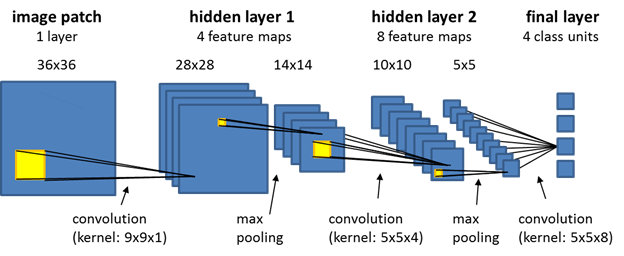
Artificial neural networks have long been popular in machine learning. More recently, they have received renewed interest, since networks with many layers (often referred to as deep networks) have been shown to solve many practical tasks with accuracy levels not yet reached with other machine learning approaches. In image analysis, convolutional neural networks have been particularly successful. The term refers to a class of neural networks with a specific network architecture, where each so-called hidden layer typically has two distinct layers: the first stage is the result of a local convolution of the previous layer (the kernel has trainable weights), the second stage is a max-pooling stage, where the number of units is significantly reduced by keeping only the maximum response of several units of the first stage. After several hidden layers, the final layer is typically a fully connected layer. It has a unit for each class that the network predicts, and each of those units receives input from all units of the previous layer.

Solve complex problems and recognize objects in images based on the Google TensorFlow™ library- create, train and apply convolutional neural networks using eCognitions algorithms.
Learn more:
Convolutional Neural Networks - Deep Learning Tutorial
Convolutional Neural Networks - Deep Learning Classification (User Guide)
Convolutional neural networks - Deep Learning Features (Reference Book)
eCognition tv - Deep Learning webinars and more on our website